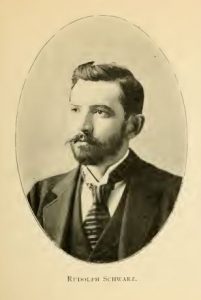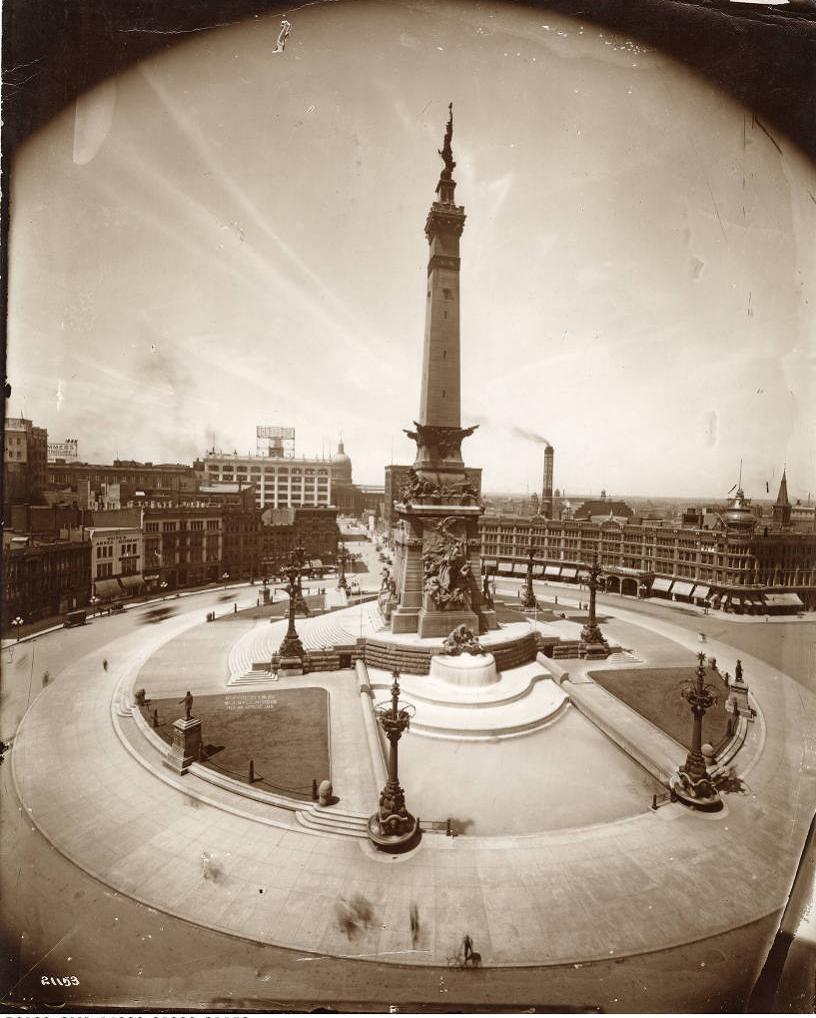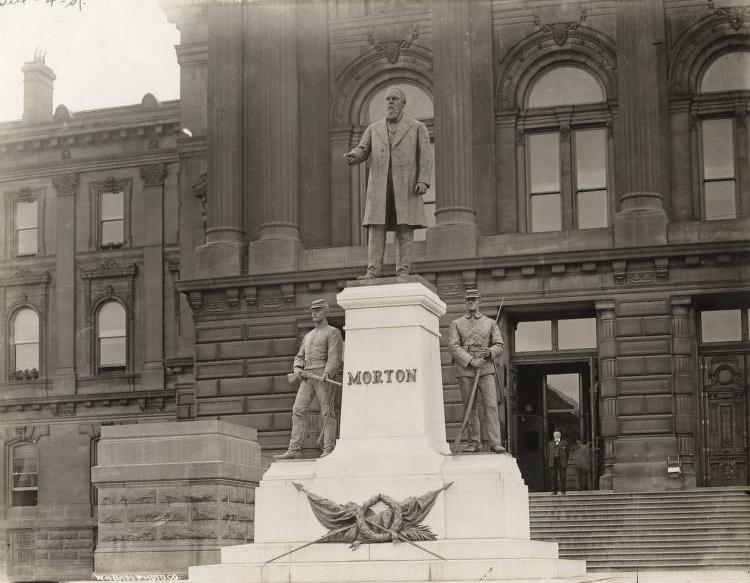
Photo info ...
Credit: Conklin, Julia Stout, Public domain, via Wikimedia CommonsView Source
(June 1866-Apr. 14, 1912). Born in Vienna, Austria, Schwarz attended the Vienna Academy of Art for six years. Upon graduating in 1889, he became a student of Joseph Kaffsack and later of Geiger and Eberlein, all prominent sculptors in Berlin.

Schwarz came to Indianapolis in December 1897 when he was commissioned by architect Bruno Schmitz to carve the stone “War” and “Peace” groups at the foot of the on the Circle. Criticized for making his figures too Germanic in appearance, Schwarz altered the original design by “shaving” the soldiers’ beards and anglicizing their faces. He also carved two smaller figures, named “Dying” and “Return,” on the east and westsides of the monument as well as the soldiers positioned at each corner.
Other works by Schwarz located in Indianapolis include the statue of Governor at the east entrance to the , a monument for Mrs. Albertina Allen Forrest in , as well as many bronze works for mausoleums at Crown Hill. Schwarz also continuously taught classes in sculpting at the .

Schwarz is known for at least 30 other works throughout Indiana, many of them war memorials. He created a few pieces for Wabash College in Crawfordsville. He also did some out-of-state commissions, including the statue of Governor Hazen Pingree at Michigan’s State House and a bronze tablet for the Americans of German Ancestry at Cincinnati’s Memorial Hall.
For the statue of Pingree, Schwarz revived the lost art of wax casting and used this method to make the first bronze cast ever done in Indiana. While this process became a trademark of his bronze pieces, Schwarz lost money on almost all of his commissions due to imperfections in this casting method. His Hoosier friends Carl Lieber and Theodore Stempfel tried to help his career by building a studio, securing work, and managing his financial affairs, but Schwarz so consistently underbid his work that he died in poverty.

Help improve this entry
Contribute information, offer corrections, suggest images.
You can also recommend new entries related to this topic.